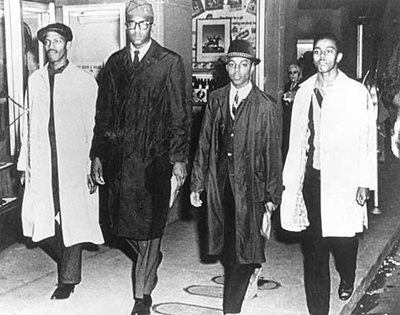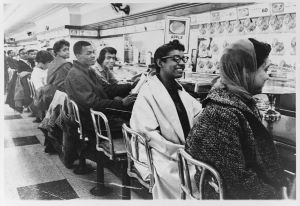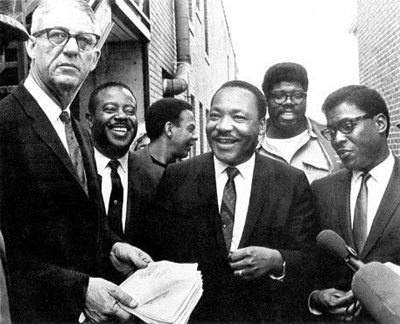The Martin Luther King, Jr. Legacy
As we celebrate and reflect upon Martin Luther King’s life and legacy (1929-1968), we should be mindful of this 1964 Nobel Peace Prize winner’s commitment to making life more just for the downtrodden. Along with his nonviolent activism, he and many others had the courage to oppose the deeply entrenched racial segregation policies that prevented persons of African descent and other persons of color from participating in the financial, political, educational, medical and social American fabric of life. According to history.com, King was arrested at least 29 times. Change did not and still does not come easily. Through his work and that of other activists, President Lyndon B. Johnson signed into legislation the 1964 Civil Rights Act that dismantled legal segregation in all public facilities. The law guaranteed access to protected categories of humans including race, color religion, sex, or national origin. In August, 1965, the Voting Rights Act abolished obstacles, primarily in the South that required literacy tests and poll taxes to vote. King saw this as progress but knew that a massive drive to register and educate voters would have to take place due to anticipated intimidation tactics imposed upon southern African American voters.
Dr. King was enthusiastic about student activism. For example, the four African American North Carolina A &T College students who conducted the first sit in protest at the Woolworth Lunch Counter in Greensboro NC, February 1, 1960, eventually sparked a sea of enthusiasm when they first sat at the counter to be served. For it was a counter reserved for white patrons only. They were in violation of racial segregation laws, and remained unserved until closing. Within a week into their protest, they were joined by several hundred area Greensboro students (including some European Americans) that expanded the sit in to include a downtown Woolworth store. This peaceful protest expanded throughout North Carolina and other states having Woolworth Lunch Counters. Even their northern chain stores were picketed. Due to an invitation to speak to student protestors from SCLC (Southern Christian Leadership Conference), on February 16, Martin Luther King presented a speech to commemorate the student activism at White Rock Baptist Church in Durham. He was quite impressed with the dynamism of their protests. See excerpt from speech below:
From “The Creative Protest”
“In my recent travels to Africa and Asia, I was struck by the youthfulness in the struggle for liberation and by the immensely responsible roles of students. What is fresh what is new in your fight is the fact that it was initiated, fed and sustained by students. What is new is that American students have come of age. You now take your honored places in the world wide struggle for freedom.” See https://kinginstitute.stanford.edu/king-papers/documents/creative-protest
Martin Luther King strongly advocated the nonviolent model of protest that was heavily influenced by Gandhi’s nonviolent philosophy. His last work for justice of the poor, underpaid workers included a massive number of protesters who supported the grievances of sanitation workers in Memphis. Their working conditions were deplorable with poor equipment and very low wages. Many had to utilize food stamps to survive. Nonviolence seemed to be an unattainable approach. Protestors were factionalized unbeknownst to Dr. King. Supposedly, a Black Power group-referred to as “The Invaders” were blamed for starting the violence. On March 28, 1968, an estimate of 22,000 high school and college students joined the protest that erupted in chaos and looting. The mayor had to implement martial law and call out the National Guard. When some demonstrators returned to the Clayborn Temple, the police used tear gas in the sanctuary and clubbed them. The protest was re-scheduled for April 3, 1968. History tells us that King delivered his fatal speech, “I’ve Been to the Mountaintop,” prior to being assassinated on April 4, on the balcony of the Lorraine Hotel while getting ready for dinner. See
https://kinginstitute.stanford.edu/encyclopedia/memphis-sanitation-workers-strike
At the heart of protest is the use of social media platforms, to present one’s comments about issues. Protest by the masses can develop rapidly and even anonymously. Planning can take place on line and reach many potential participants. Seemingly a charismatic leader, such as Dr. King or Cesar Chavez for United Farm Workers does not appear to be the model protest groups are using currently. Perhaps confusion may arise if there’s no leader and everyone is just joining the protest. Time will tell if this method is effective. The recent protests we have witnessed during the COVID-19 summer of the 2020 pandemic demonstrates that many high school and college students worldwide are concerned about some form of injustice whether it is Global Climate Strikes or LGBTQ Day of Silence. These two protests moved to a digital platform, something unavailable during Martin Luther King’s era. However, Black Lives Matter protests gained enormous in-person participation due to George Floyd’s death caused by Minneapolis policeman Derek Chauvin’s knee placed firmly on his neck. Protests against injustices such as Breonna Taylor’s No Knock Warrant, in Louisville, Kentucky and so many other African American fatalities in different parts of the country that represent “questionable” circumstances resulting in death at the hands of police officers, have resulted in either some systemic changes in police reform or dialogue concerning some possible changes. Protest is a tool for negotiation when circumstances are intolerable, arguable and/or in need of improvement. However, if violence erupts in the process, chaos will ensue and no viable agreements can be reached. Martin Luther King in “Letter from Birmingham Jail” states that any law that uplifts human personality is just. Any law that degrades human personality is unjust. “Injustice anywhere is a threat to justice everywhere”.
https://www.africa.upenn.edu/Articles_Gen/Letter_Birmingham.html
Sources:
Cohen, Sharon, “Social Media Is the New Heart of Political Protests”, June 2018,
Social media is the new heart of political protests (apnews.com) Accessed Jan. 18, 2021.
King, Martin Luther, “Letter from Birmingham Jail,” African Studies Center, UP
https://www.africa.upenn.edu/Articles_Gen/Letter_Birmingham.html Accessed Jan. 18, 2021
King Research and Education Institute, “A Creative Protest,”
https://kinginstitute.stanford.edu/king-papers/documents/creative-protest Accessed Jan. 18, 2021.
King Research and Education Institute, “Memphis Sanitation Workers’ Strike”,
https://kinginstitute.stanford.edu/encyclopedia/memphis-sanitation-workers-strike Accessed Jan. 18, 2021.
Carol Taylor Johnson, PhD.
WVSU National Center for Human Relations

Four North Carolina A&T College Students, David Richard, Joseph McNeil, Franklin McCain and Ezell Blair, Jr., Feb. 1, 1962. Began sit in protest at Woolworth Lunch Counter, Greensboro, NC.

The Woolworth Lunch Counter protest spread to 55 cities, primarily in the South. Woolworth chains in northern cities could face boycotting.

Martin Luther King Jr. with Sanitation Workers, Memphis, TN, April 1968.